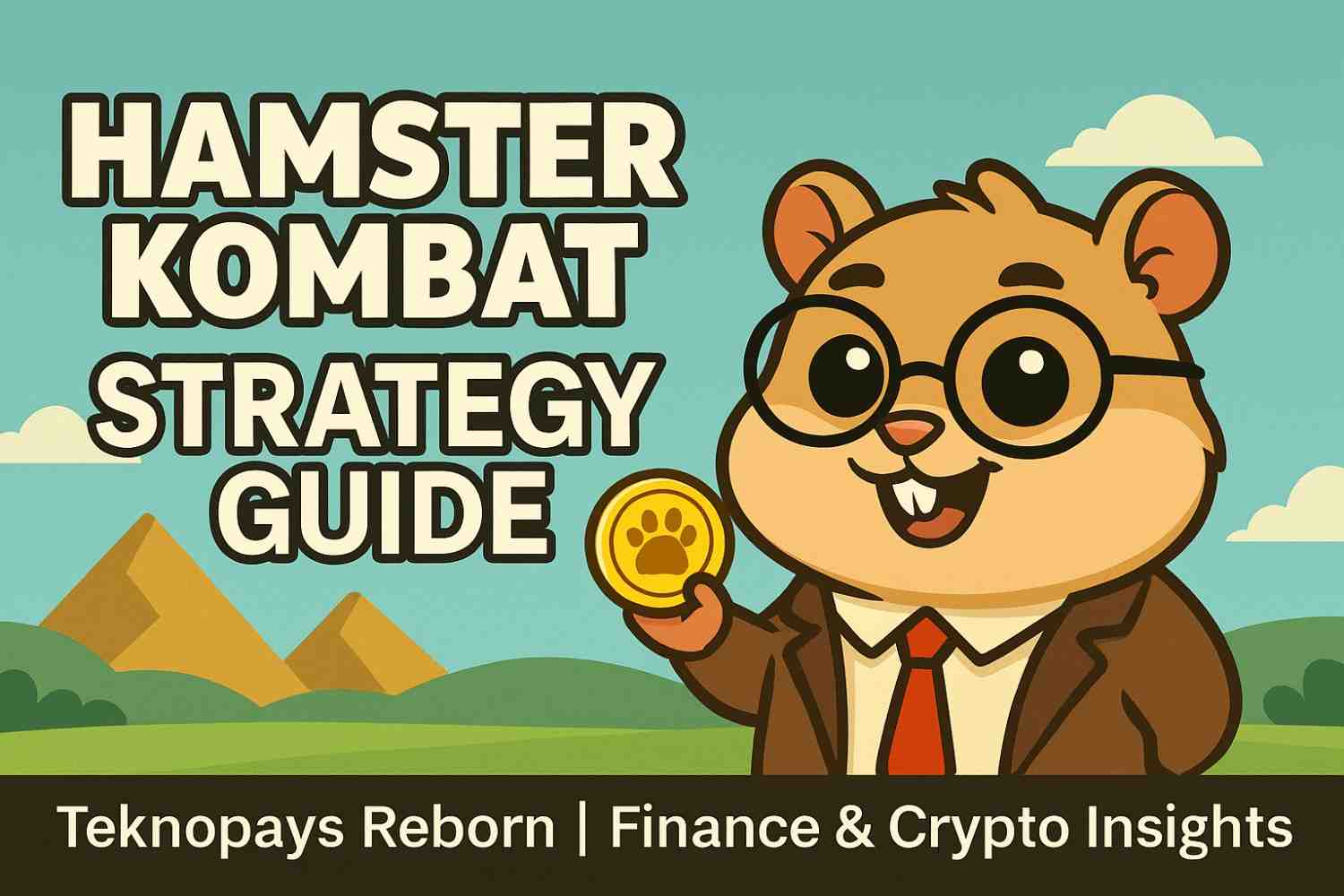Hamster Kombat Strategy Guide

Hamster Kombat, launched on March 26, 2024, is a viral click-to-earn sensation built directly into the Telegram app. Players step into the shoes of hamster CEOs managing a fictional crypto exchange. By tapping their digital hamster, they earn HMSTR coins that can later be swapped for real cryptocurrency tokens. Thanks to its addictive mechanics and integration with the TON (The Open Network) blockchain, Hamster Kombat quickly skyrocketed to hundreds of millions of players worldwide.
What Is Hamster Kombat?
At its core, Hamster Kombat is a play-to-earn Telegram mini-app. Getting started is as simple as searching for the bot on Telegram and hitting “Start.” Gameplay begins with tapping a hamster avatar to collect HMSTR coins. What keeps players hooked is the blend of idle tapping, upgrade systems, daily missions, referral bonuses, and occasional mini-games that add depth and variety.
Recommended Articles:
Gameplay Mechanics and Strategies
The main loop revolves around tapping: every tap generates HMSTR coins, and upgrades increase their value. Beyond that, the game introduces passive income mechanics, allowing coins to accumulate even when the player is offline. Smart strategies involve investing in booster cards, unlocking exchange upgrades, and carefully timing purchases to maximize returns.
A key feature is the “daily combo,” a specific sequence of upgrades that rewards players with extra bonuses. Completing daily missions consistently and activating combos at the right time separates casual players from high earners.
Viral Growth and Telegram Dominance
Hamster Kombat’s meteoric rise was fueled by its referral system. Players earned rewards for inviting friends, which quickly snowballed into exponential growth. Within just three months of its release, the game surpassed 240–300 million users and became Telegram’s biggest mini-app, with more than 50 million active subscribers.
HMSTR Token, Airdrop, and Exchange Listings
HMSTR coins were designed to bridge in-game rewards with real-world value. Pre-listings appeared in July 2024 on platforms such as Bybit, followed by official token launches on Binance and OKX. The highly anticipated airdrop and token generation event took place on September 26, 2024. Initially, HMSTR surged nearly 40% above its pre-market price, but corrections soon followed.
In reality, only early adopters and insiders profited significantly. Latecomers faced sharp declines in value, with most casual players earning between $5 and $50. The hype was undeniable, but the financial returns often fell short of expectations.
Recommended Articles:
Who Created Hamster Kombat?
The creators of Hamster Kombat remain mostly anonymous. Investigations suggest connections to three Russian entrepreneurs—Eduard Gurinovich, Alexander Zelenshchikov, and Alexander Pasechnik. Some analysts speculate that Telegram itself may have had a hand in promoting the game’s viral success, raising questions about transparency and potential political ties.
Cybersecurity experts also warn players to avoid unofficial versions. Fake clones on Android reportedly spread spyware, leading to data leaks and unauthorized subscriptions. To stay safe, users should stick exclusively to the official Telegram bot.
Game Features Beyond Tapping
While tapping is the foundation, Hamster Kombat offers a variety of features to keep players engaged:
- Passive income from upgraded exchange components
- Daily combo upgrades that unlock bonus earnings
- Mini-games and puzzles for additional rewards
- Referral bonuses to accelerate progress
- Future updates: NFT skins, PvP hamster battles, and live seasonal events
Criticisms and Concerns
Despite its massive popularity, Hamster Kombat has faced criticism:
- HMSTR token volatility caused unpredictable earnings
- Late adopters saw far smaller rewards than early players
- Fake apps and phishing links put users at risk of malware and data theft
- Unclear developer identities fueled skepticism about its financial structure
Conclusion: Is Hamster Kombat Worth Playing?
Hamster Kombat is more than just a viral Telegram game—it’s a case study in how gamification, referrals, and crypto incentives can attract massive global attention. While it provided fun, social engagement, and an introduction to blockchain for many, its financial rewards were inconsistent, and risks were real.
For crypto-curious gamers, Hamster Kombat is both entertaining and cautionary. The best advice? Play for fun, only trust official sources, and treat potential profits as speculative rather than guaranteed.
References
- Le Monde: “Hamster Kombat: Behind the Telegram Game Sensation” (July 2024)
- Wired: “How Telegram Game Hamster Kombat Got 300 Million Users” (August 1, 2024)
- Russian Wikipedia: “Hamster Kombat” (updated 4 weeks ago)
- CryptoNews & KuCoin: “What is Hamster Kombat?” & Token Roadmap Guides
- WunderTrading: “Hamster Kombat Explained: Gameplay, Strategies, and Features” (July 2024)
- ESET Cybersecurity Report on Fake Hamster Kombat Apps (via The Sun)
- Trust Wallet & Bitget: “Beginner’s Guide to Hamster Kombat & Safety Tips”